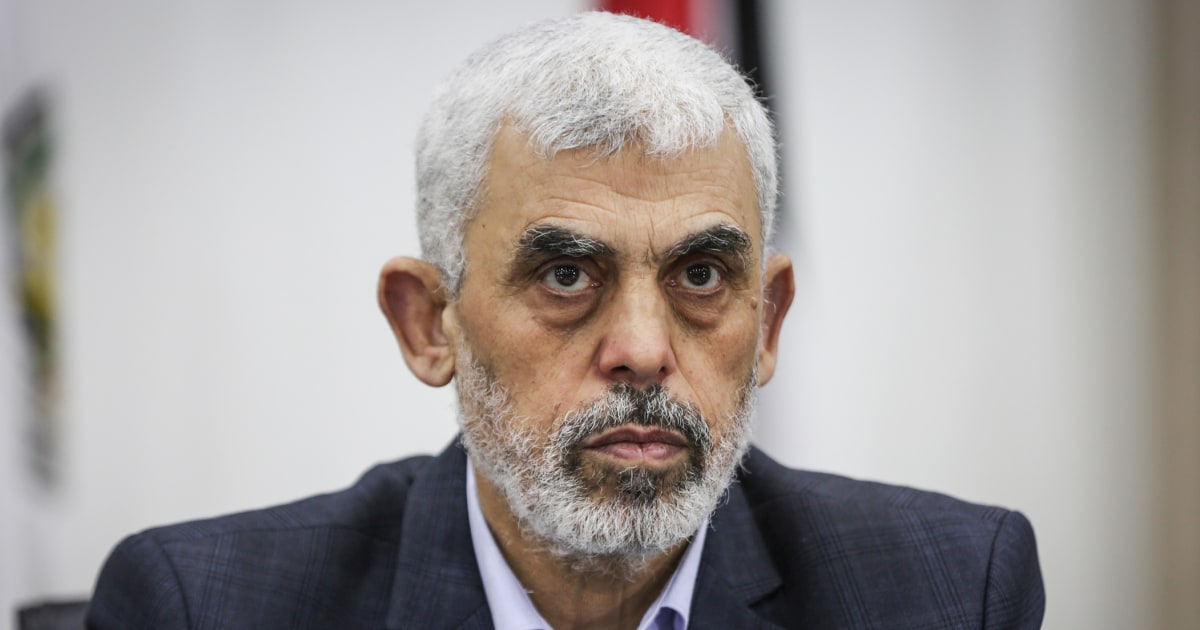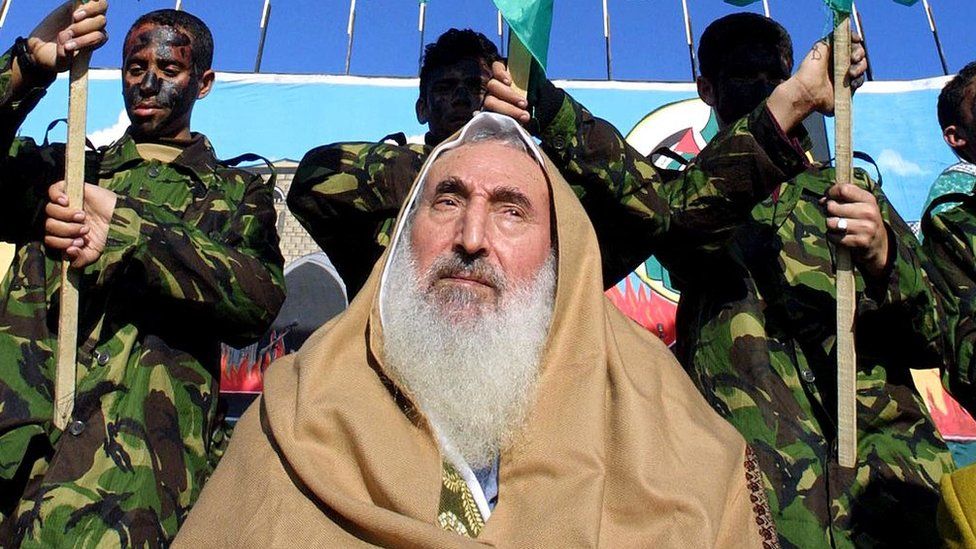Hamas Leadership

Hamas, the Palestinian Islamist movement, has a complex leadership structure that has evolved over time. Understanding the organization and power dynamics within Hamas is crucial for analyzing its decision-making processes and predicting its future actions.
Organizational Structure
Hamas’s organizational structure is hierarchical, with a clear chain of command. The highest authority lies with the Shura Council, which serves as the movement’s supreme decision-making body. The Shura Council is composed of senior Hamas leaders and is responsible for setting overall strategy and policy.
- The Political Bureau is the executive arm of Hamas, responsible for day-to-day operations and implementing decisions made by the Shura Council. It is headed by the Political Chief, who acts as the movement’s spokesperson and chief negotiator.
- The Military Wing, known as the Izz ad-Din al-Qassam Brigades, is responsible for Hamas’s military operations and is headed by a separate leader.
- The Executive Committee oversees the day-to-day affairs of the movement and is responsible for managing Hamas’s social and charitable activities.
Power Dynamics
Internal power dynamics within Hamas are complex and have been shaped by various factors, including historical developments, political alliances, and ideological differences. While the Shura Council holds ultimate authority, the influence of different factions and individuals can vary.
- Internal factions: Hamas is not monolithic and includes various factions with differing views on strategy and policy. These factions can sometimes compete for influence within the movement, leading to internal disagreements and debates.
- Influence of key leaders: Certain individuals within Hamas, such as the Political Chief or the head of the Military Wing, often wield significant influence due to their charisma, experience, or political connections. Their positions can shift over time, depending on internal power struggles and external pressures.
- External factors: External factors, such as the Israeli-Palestinian conflict, regional politics, and international pressure, can also influence power dynamics within Hamas. These factors can lead to shifts in alliances, changes in priorities, and adjustments in the movement’s overall strategy.
Decision-Making Process
Hamas’s decision-making process is influenced by a complex interplay of internal and external factors. While the Shura Council holds the ultimate authority, decisions are often made through a combination of consultation, consensus-building, and negotiation.
- Consultation and consensus: Hamas values consultation and seeks to build consensus among its leadership before making major decisions. This process can involve extensive discussions, debates, and negotiations, especially on issues that have significant implications for the movement’s future.
- Influence of key leaders: The views and opinions of influential leaders within Hamas, such as the Political Chief or the head of the Military Wing, can significantly impact the decision-making process. Their expertise, political connections, and perceived legitimacy can influence the direction of discussions and ultimately shape the outcome of decisions.
- External factors: External pressures and developments can also influence Hamas’s decision-making. For example, the Israeli government’s policies, the regional political landscape, and international sanctions can all affect the movement’s strategic choices and tactical responses.
Hamas Leaders: Israel Hamas Leader

Hamas, the Palestinian Islamic Resistance Movement, has navigated a complex international landscape since its inception. Its leaders have engaged in a multifaceted approach to international relations and diplomacy, aiming to achieve its political objectives. This approach has been shaped by the organization’s ideological underpinnings, its relationship with Israel, and the broader regional dynamics.
Hamas Leaders’ International Relations and Diplomacy, Israel hamas leader
Hamas leaders have sought to cultivate relationships with various international actors, including countries, organizations, and groups. These relationships are often driven by strategic considerations, such as securing support for its political agenda, gaining access to resources, and building international legitimacy.
- Relationship with Countries: Hamas has developed relationships with several countries, including Iran, Qatar, Turkey, and some Arab states. These relationships are based on shared political and ideological interests, as well as strategic partnerships. For instance, Iran provides significant financial and military support to Hamas, while Qatar has played a role in mediating between Hamas and Israel. However, these relationships are often characterized by complexity and shifting dynamics, influenced by regional geopolitical interests and evolving international alliances.
- Relationship with Organizations: Hamas has engaged with various international organizations, including the United Nations, the Organization of Islamic Cooperation (OIC), and human rights groups. These interactions aim to raise awareness of its cause, garner support for its political agenda, and challenge Israel’s policies. However, Hamas’s designation as a terrorist organization by many countries and international bodies has limited its access to these platforms and hindered its efforts to achieve international recognition.
- Relationship with Groups: Hamas has forged relationships with various Palestinian factions, as well as international groups and movements that share its ideology or support its cause. These relationships have been instrumental in coordinating activities, mobilizing support, and advancing its political agenda. However, these relationships are often marked by internal disagreements and power struggles, reflecting the complex and fragmented nature of Palestinian politics.
Strategies and Tactics Employed by Hamas Leaders
Hamas leaders have employed a range of strategies and tactics in international diplomacy and negotiations. These include:
- Public Diplomacy: Hamas has actively engaged in public diplomacy, using media outlets, social media platforms, and international events to promote its narrative, garner support, and build international legitimacy. This approach has involved using propaganda, issuing statements, and organizing demonstrations to raise awareness of its cause and mobilize public opinion.
- Negotiations: Hamas has participated in negotiations with Israel, primarily through indirect talks facilitated by third parties. These negotiations have aimed to achieve a ceasefire, secure the release of Palestinian prisoners, and address issues related to the Israeli blockade of Gaza. However, these negotiations have been characterized by deadlock and mistrust, with both sides often failing to reach a lasting agreement.
- International Advocacy: Hamas has sought to garner international support for its cause by engaging with governments, organizations, and individuals. This has involved lobbying for international recognition, advocating for the lifting of sanctions, and mobilizing support for its political agenda. This approach has been met with mixed success, as Hamas’s designation as a terrorist organization by many countries has limited its ability to gain widespread international support.
Israel hamas leader – The conflict between Israel and Hamas leaders often feels like a tangled mess of history and politics, a conversation where each side speaks a different language. But sometimes, even amidst such complexity, we find moments of unexpected connection. Imagine, for instance, a vintage telephone table with chair, a timeless design statement , representing the yearning for communication, a bridge across the divide.
Perhaps, like that table, we can find a way to sit down, share a cup of tea, and find common ground, even in the midst of conflict.
The conflict between Israel and Hamas is a complex and multifaceted issue, with each side presenting their own narrative. Finding a solution requires careful consideration and a willingness to understand different perspectives. In this context, it’s interesting to consider how everyday objects, like the ikea lycksele chair bed cover , can be a metaphor for the challenges of finding a comfortable and functional solution in a seemingly unyielding situation.
Ultimately, resolving the conflict requires empathy, understanding, and a commitment to finding common ground, just as choosing the right cover for a chair bed requires careful thought and attention to detail.
